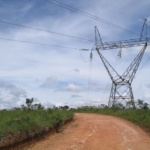Client Spotlight: Hypertherm
Long Trail Sustainability Senior Consultant, Shelly Severinghaus, recently interviewed Robin Tindall, Environmental Stewardship Manager at Hypertherm, a New Hampshire based manufacturer of industrial cutting solutions, about why, how and when Hypertherm uses life cycle assessment.
Why is environmental sustainability important to Hypertherm?
The engineering mission at Hypertherm is to develop innovative technologies, products and solutions that provide superior value to our customers, our owners and our planet. To provide superior value to our planet, we know that we need to reduce the environmental impact of everything we do. To this end, we began working with Long Trail Sustainability in 2012 to conduct Life Cycle Assessments (LCAs).
Life cycle assessment is a powerful methodology to evaluate the environmental impacts over the life of a product or service. An LCA can help answer many questions about where the hot spots are, how one material or product compares to another and where there are tradeoffs.
What products have you conducted LCAs on, and what type of LCA did you conduct (screening, full, full with critical review)?
Hypertherm has performed screening LCAs on seven different products:
- Heavy industrial plasma product family, the HPR260XD;
- Light industrial plasma product family, the Powermax105;
- Waterjet product, HyPrecision 50S;
- Compared the Powermax45 XP to its predecessor, the Powermax45 through a hotspot LCA;
- Two products that have not yet been commercialized.
What is the driver for you to conduct LCAs?
LCAs allow us to prioritize and enable us to see where along the value chain our biggest impacts arise. LCA identifies “hot spots,” or where the majority of the environmental impacts are coming from. It may be a life cycle stage, particular component or processing step. Hypertherm recognizes the need to prioritize voluntary impact reduction alongside new product development, and the LCA results allow the company to focus its efforts on the intersection of the biggest impacts and areas that we can actually control and change.
LCA results allow the company to focus its efforts on the intersection of the biggest impacts and areas that we can actually control and change.
An example is with our Heavy Industrial plasma cutting systems. The LCA results showed that the majority of the impacts are from the scrap produced while cutting. Therefore, Hypertherm has been working with its ProNest nesting software team to minimize scrap production at its source. We also learned that use phase electricity consumption is a driver of impacts, so we are researching ways to reduce electricity usage, while maintaining the same or better performance.
When have you incorporated LCA in the design process?
Hypertherm has started conducting LCAs for key products at the early stages of R&D. This allows product designers and engineers to ask questions about which material has fewer environmental impacts, and the effects of making components more durable. In addition, this allows changes to be made at the lowest possible complexity and lowest cost. Around 80% of environmental impacts are “locked in” during ideation and design stages (see Figure 1 below). Therefore, the earlier an LCA is integrated into product development, the more influence we can have in lowering the environmental impacts, and it is much less expensive to do so at this phase.

Sources: Lewis et al., 2001. Design + Environment, A Global Guide to Designing Greener Goods. Greenleaf, Melbourne and https://theworks.org/educators-and-groups/elementary-engineering-resources/engineering-design-process/
How has LCA guided your business decisions?
We can show our customers that through innovation, we are reducing our collective impact on the environment.
Conducting LCAs allows us to ask “what if” questions and try out different usage models or materials before committing to them. By using LCA, Hypertherm is able to see the results of scenario analyses and what factors are the most influential in reducing the overall environmental impacts. Hypertherm has been able to evaluate transportation modes like oceanic vs. air freight, recycling vs. landfilling at a product’s end of life, virgin vs. recycled copper, packaging options and material choices.
How do you plan on continuing to use LCA in the future?
For our newly launched products, the LCA results have become an important part of the conversation in comparing the new product to its predecessor. We can show our customers that through innovation, we are reducing our collective impact on the environment.
Hypertherm plans to continue to use LCAs to assess existing and new products, and as a way to measure tradeoffs during the design process in the future.



